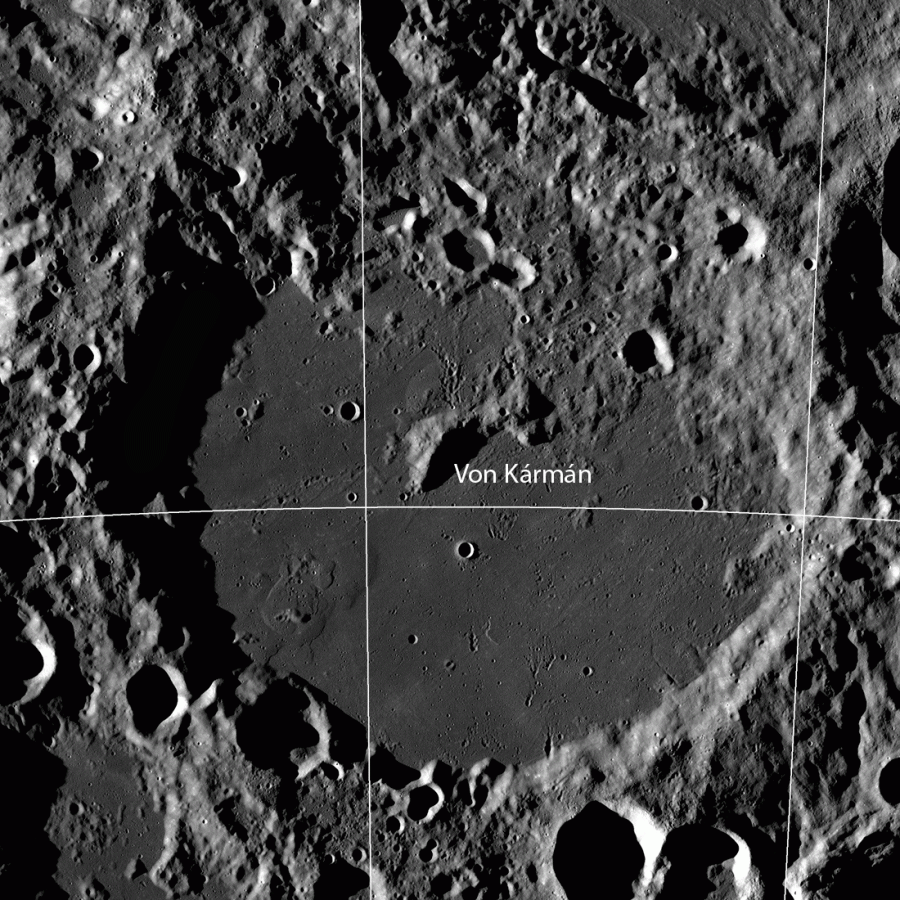Pride and Passion, the story of turning a dream into a space project
- Transfer
As the enthusiasm and full dedication of space research brought the achievements of Chinese scientists to new heights.
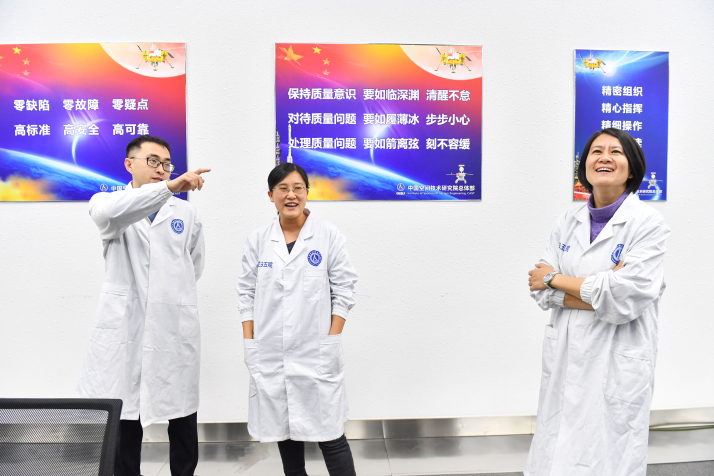
In the photo: Li Fei (left) - Chief Designer of the Chang'e-4 Reentry Module, Wen Bo (center) - Chief Designer of the Yuytu-2 Rover (The Jade Hare-2), and Zhang He (right) - Executive Director project "Chang'e-4", aerospace control center of the Chinese Academy of Space Technology.
Aerospace engineer Wen Bo’s smartphone stores four of her photographs in the same pose and background, but taken at four different stages, marking the milestones in her career, as well as steps in China’s lunar research program.
The first photo was taken back in 2007, when Wen Bo just started working at the Chinese Academy of Space Technology (CACT), after graduating from the university, and it was also the year when China launched its first research lunar unit, Chang'e-1.
The second, third and fourth photographs were taken immediately after the launch of the second research lunar station Chang'e-2 in 2010, the third station of Chang'e-3 in 2013 and after the successful launch of the fourth station of Chang'e-4 in December 2018, respectively.
"More than a decade flew in the blink of an eye," Wen Bo said, looking at photos taken in front of the entrance to the Chinese Academy of Space Technology.
The Chang'e-4 station was the first in the world to make a successful soft landing on the far side of the moon on January 3, 2019, and the Chinese National Space Administration officially announced the successful lunar landing and the beginning of further exploration of the Moon by the Chang'e-4 modules on January 11, 2019.
Observing the soft landing of the landing module on the Moon at the Beijing Aerospace Center, Zhang He, the executive director of the Chang'e-4 project, could not hold back her tears.
Speaking about this emotional moment, Zhang He said: “I was very excited. For the last three or four years, our team has worked hard together. This success was achieved with great difficulty. ”
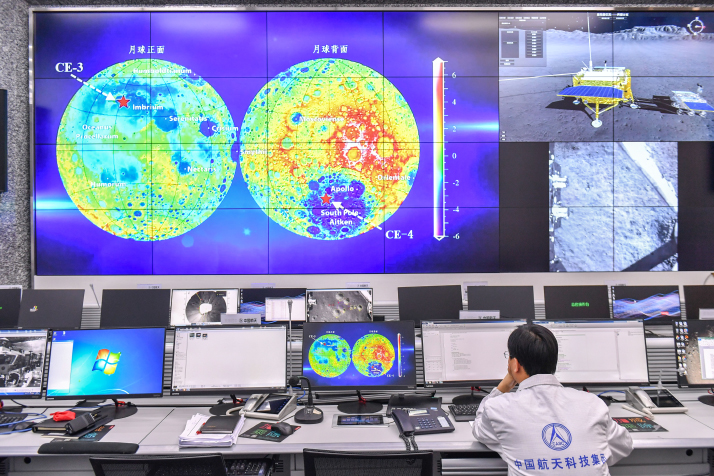
In the photo: a scientist at work in the mission control center of the Chinese Academy of Space Technologies.
Facing problems, solving them,
“I am proud to have taken part in this mission,” said Zhang He, “we did what no one had ever done before, and overcame many difficulties.”
According to Zhang He, one of the main problems in the study of the far side of the moon is the problem of communication, since the devices on the back of the moon are not available for communication directly from Earth, therefore a separate communication satellite is required for signal relaying.
The problem was solved after China launched the Tseutsiao satellite transponder (forty bridge) on May 21, 2018 to exchange data between the MCC and Chang'e-4 project modules.
Another problem was the fact that the reverse side of the moon is more likely to fall into meteorites, so the terrain there is very complicated, which creates a high risk for an abnormal landing, which can lead to a tilting or complete loss of the landing module during the landing process.
To overcome this difficulty, through long studies, a relatively safe settlement site was chosen. Zhang and other engineers from the project team studied a large amount of relevant reference materials, consulted with a number of aerospace scientists, and analyzed the characteristics of the lunar soil and landscape to determine the approximate location for an optimal and safe landing of the station.
In the end, the chief designer of the landing apparatus, Li Fei, and his colleagues decided on the area for the landing pad in the Karman crater, within which there are sufficient flat areas on the surface for the project.
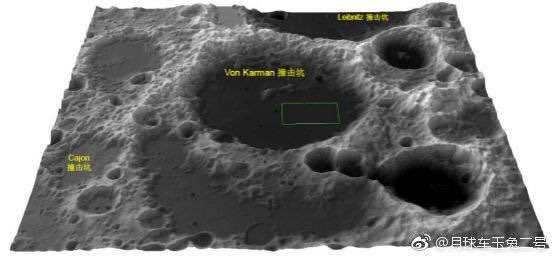
Li Fei, who was born in the 1980s, was nicknamed the “walking encyclopedia” for a wide range of scientific knowledge.
In addition, according to Zhang He, already at the design stage, artificial intelligence technologies were introduced into the onboard computer systems of the landing gear, which allowed different project modules to become much smarter and more autonomous than previously launched ones.
An array of special sensors and cameras measuring various parameters of speeds and distances, which can also process real-time 3D images, was installed on the elements of the Chang'e-4 descent module so that the onboard systems could analyze and correct themselves during the landing procedure parameters and data on the situation, including information about the current position, angles and inclination to the surface, quickly identify unstable (dangerous) elements on the surface (stones, small craters) and be able to evade from such obstacles to the extreme point of no return in the process of landing in automatic mode without operator intervention on Earth.
Zhang He added that it is an advanced modern technology that meets high international standards.
Since the reverse side of the moon also has a more complex relief than the side visible from Earth, the design process had to take into account that the YuyuT-2 rover will face more serious problems and interference that may arise during movement than those with which His predecessor Rover "Yuytu", sent to the Moon surface in 2013, collided.
Wen Bo, chief designer of the Yuytu-2 rover, said that the design of the rover was significantly improved and improved, especially the emphasis was placed on preventing mechanical failure of systems during its operation.
After the Yuytu-2 rover was successfully unloaded from the Chang'e-4 descent module onto the lunar surface, Wen Bo is now responsible for organizing the remote control procedures for the rover.
Wen Bo said that since the lunar surface in the Chang'e-4 landing zone is full of folds, numerous pebbles and small craters, after each small movement, the rover should stop, take a picture of the surface around and send this data back to Earth satellite repeater.


Scientists on Earth then process this data and schedule a further route that the rover will follow.
Wen Bo clarified that the “Yuuta-2” rover antennas should be configured to point at the repeater satellite in order to send and receive control signals correctly, while the rover solar panels should be optimally tilted to get a large amount of solar light to maximize power generation at the time data is committed.
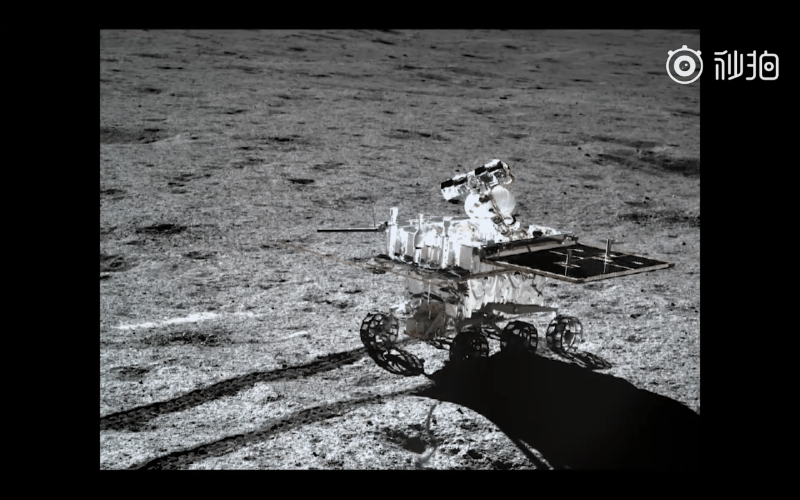
Facing all these problems during the preparation and implementation of the project, many of their solutions also promise to give us further opportunities and discoveries, Zhang He said, adding that the landscape elements on the back of the lunar surface may be older than similar on the visible side, so exploring the reverse side of the soil can shed more light on the origin and evolution of the moon.
In addition, the far side of the moon is an ideal place for low-frequency radio astronomical observations, since the moon blocks radio interference from the earth.
Zhang He explained that the Earth has the ionosphere, which makes it difficult to receive low-frequency radio signals from space. To receive and analyze the weak signals emitted by numerous distant celestial bodies, such radio astronomy experiments should be carried out in outer space, helping us to study the origin and evolution of stars, galaxies and the universe.
The data and results of similar experiments in near-earth orbits are also sensitive to electromagnetic interference from the Earth's surface, but there is no such interference from the Earth on the far side of the Moon.
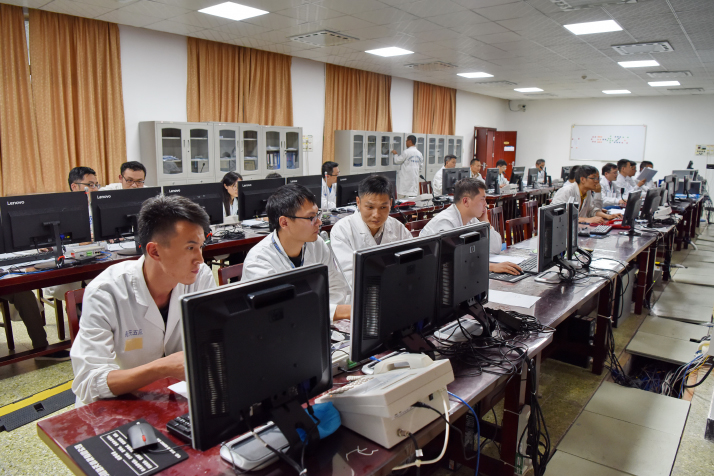
In the photo: scientists at work, Xichang Satellite Launch Center - XSLC, Sichuan Province.
A dedicated team
“Usually, the design and development of a lunar project stage takes three to four years, and sometimes the capabilities and minds of tens of thousands of people — engineers, scientists and employees of various aerospace organizations around the world — are involved in such a project,” said Zhang He.
For the Chang'e-4 project, at the first stage, the main models and elements for its modules were designed, then these models were refined, manufactured at various industry and industrial productions, assembled by components and nodes, passed stage-by-stage testing.
The Chang'e-4 descent module consists of more than 200 different elements, the Yuuta-2 rover consists of almost 100 complex elements that have been repeatedly checked and corrected / modified during the assembly process again and again.
According to Zhang He, since the aerospace industry is of great importance for the development of national wealth and human capabilities in general, real aerospace engineers are usually passionate about their work and completely committed to it.
“The most characteristic feature of any spacecraft is that after launching it is practically not recoverable in the event of a failure of any systems, unlike a car that can be withdrawn if it shows a malfunction, or an aircraft that can be serviced periodically, leading in order of his system, "explained Zhang He.
Any (even very minor) negligence can negate our years of hard work, so engineers in the aerospace industry attach great importance to the quality of their work and the numerous testing of their developments.
“We must determine in advance all potential risks and try to do everything possible to control them during the implementation of the project’s stages,” said Zhang He.
“The space industry is highly risky and requires long-term investments, so all employees in their work are almost always under great pressure, including from the burden of responsibility,” said Li Fei.
On the wall in the aerospace control center, opposite the giant video screens, there are several large boards with simple and clear inscriptions “Without defects, without failures ... high standards” , reminding employees of the need for thoroughness and absolute accuracy in their work.
In addition to the compulsory forethought and attention to detail, Zhang He's colleagues often had to arrange races over time in order to meet deadlines and not disrupt the execution dates of project stages.
It is no secret that the developers of the Chang'e-4 lunar project often worked overtime, and at the most difficult moments during the project, they even moved to a hotel next door to the Chinese Academy of Space Technology to save time on the way to the workplace.
Moreover, not all work on the project was carried out in comfortable offices with air conditioning. Some field tests of the modules were conducted at the Academy grounds in northeastern China, where the winter is very cold, and some in the north-west of the country in the harsh areas of the Gobi Desert. However, colleagues Zhang He do not complain about difficult working conditions in their lives.
Work / life balance
More than two decades have passed since Zhang He began working at the Chinese Academy of Space Technology after graduating from Beihang University, formerly known as Beijing University of Aeronautics and Astronautics, the first higher education institution in the field of aeronautics and astronautics, established after the founding of the People's Republic of China in 1949 .
during this period, Zhang He has grown from a young new employee of the Academy engaged in dynamic analysis to the executive director of the second lunar project in China.
She is also a mom who has a teenage son. As a permanently working mother, she does not believe that her work and family responsibilities are incompatible.
“A working mother is a role model for her child,” said Zhang He, adding that her son also loves science.
Admittedly, some of his colleagues Zhang He still missed some important moments in the lives of their children in the process of performing their complex and demanding permanent presence at the academy or cosmodrome work assignments.
When Cheng Ming, an aerospace engineer from the project team Zhang He, went to Xichang’s Chinese space center to complete the final preparations for launching the Chang'e-4 project in December last year, his son had an operation at the same time.
Just five years ago, Cheng Ming missed the birth of his son, because he was busy preparing for the launch of Chang'e-3.
However, Cheng Ming was able to soften the feeling of guilt in front of his son at the moment when he was able to proudly explain to his son that his father had helped send the research apparatus to the moon.
For Cheng Ming, such a sense of pride is his motivation for pursuing an engineer’s career and participating in new space research.

In the photo: Li Fei (left) - Chief Designer of the Chang'e-4 Reentry Module, Wen Bo (center) - Chief Designer of the Yuytu-2 Rover (The Jade Hare-2), and Zhang He (right) - Executive Director project "Chang'e-4", aerospace control center of the Chinese Academy of Space Technology.
Elements of the project Zhang He
Обтекатель с полезной нагрузкой проекта «Чанъэ-4» (3780 кг)
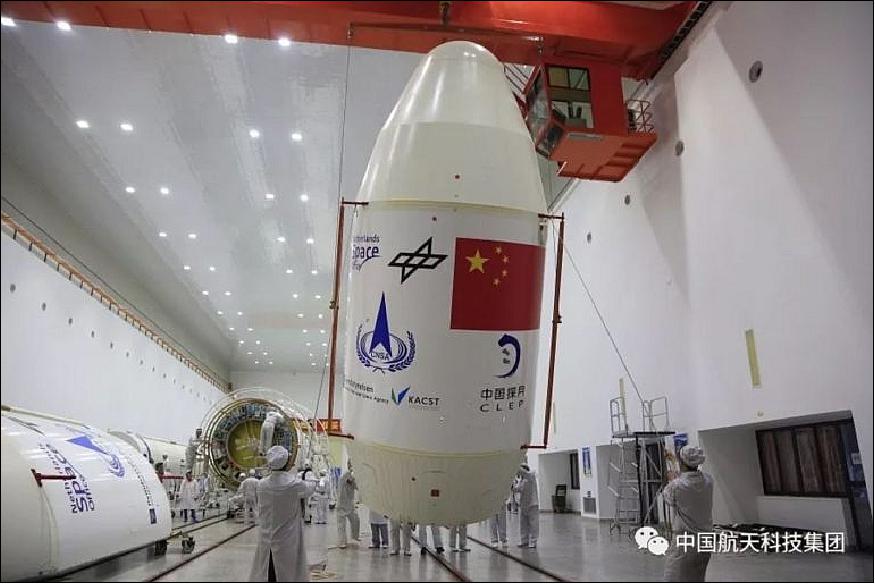
Запуск ракетоносителя «Long March 3B» с «Чанъэ-4», 7 декабря 2018 года, Китайский космодром Сичан (Xichang Satellite Launch Center -XSLC), провинция Сычуань.


Запуск ракетоносителя «Long March 3B» с «Чанъэ-4», 7 декабря 2018 года, Китайский космодром Сичан (Xichang Satellite Launch Center -XSLC), провинция Сычуань.

Li Fei's brainchild
Модуль «Чанъэ-4» (1200 кг) на поверхности Луны, фото с ровера «Юйту-2»
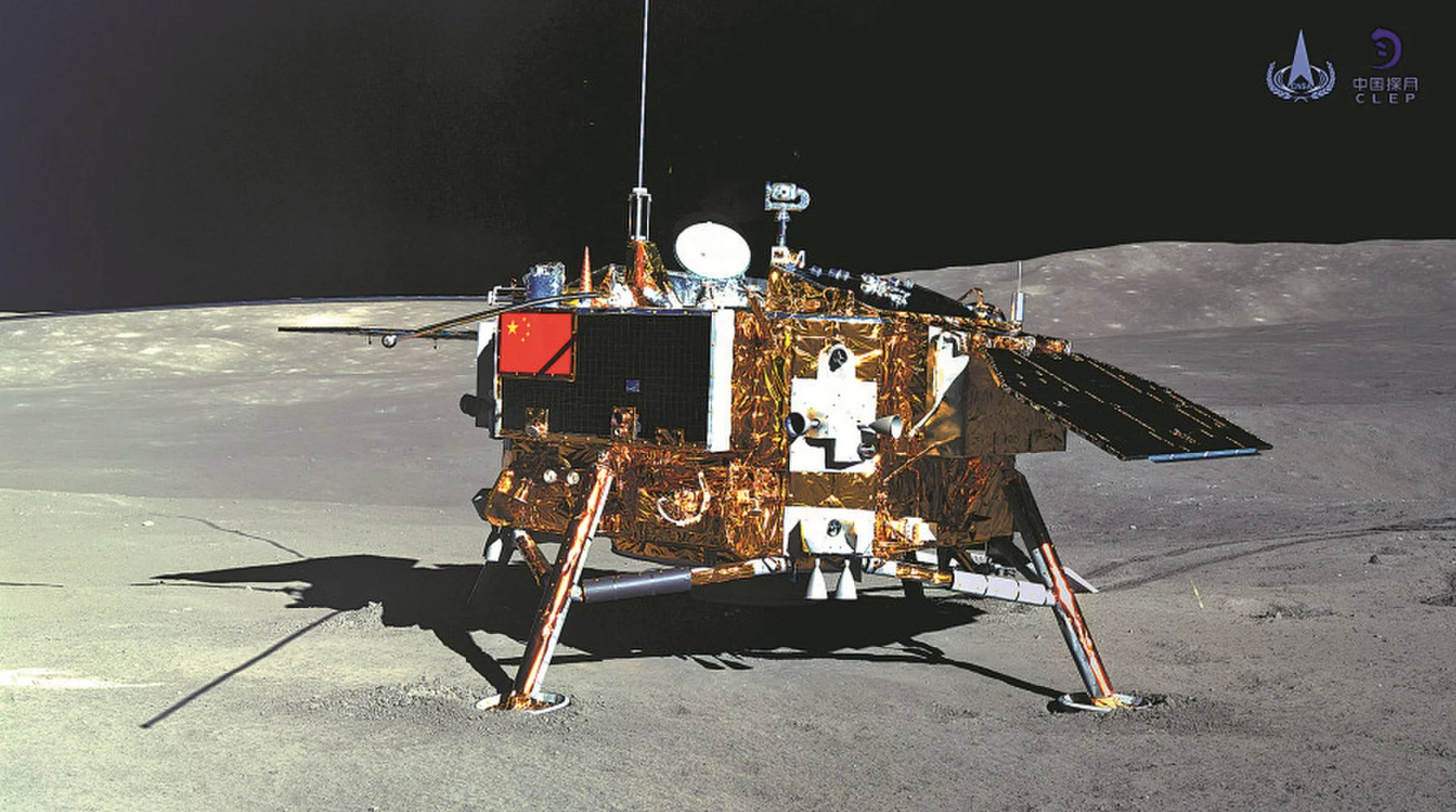

Version 2 of the Jade Bunny from Wen Bo
Ровер «Юйту-2» (140 кг) на поверхности Луны, фото с модуля «Чанъэ-4».
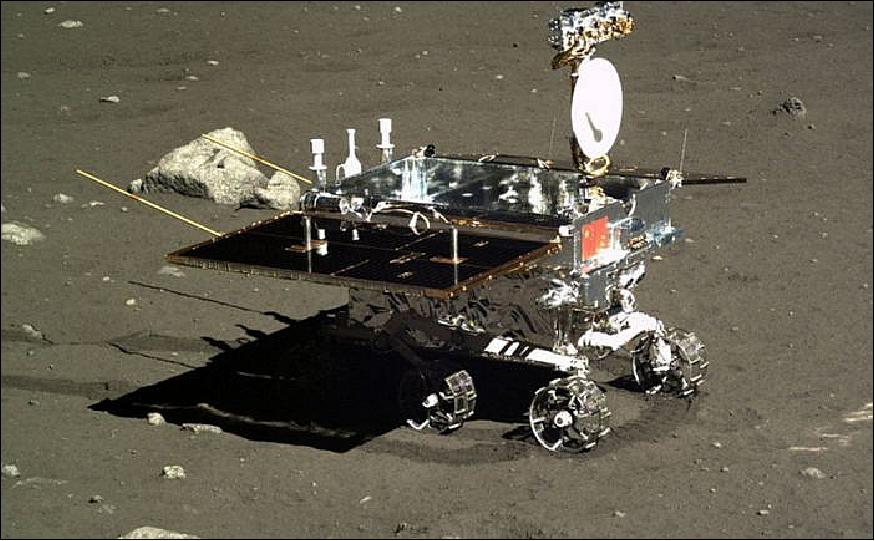

Aerospace engineer Wen Bo’s smartphone stores four of her photographs in the same pose and background, but taken at four different stages, marking the milestones in her career, as well as steps in China’s lunar research program.
The first photo was taken back in 2007, when Wen Bo just started working at the Chinese Academy of Space Technology (CACT), after graduating from the university, and it was also the year when China launched its first research lunar unit, Chang'e-1.
The second, third and fourth photographs were taken immediately after the launch of the second research lunar station Chang'e-2 in 2010, the third station of Chang'e-3 in 2013 and after the successful launch of the fourth station of Chang'e-4 in December 2018, respectively.
Note: Chang'e is a character in Chinese mythology, in Taoism revered as the goddess of the Moon.
"More than a decade flew in the blink of an eye," Wen Bo said, looking at photos taken in front of the entrance to the Chinese Academy of Space Technology.
The Chang'e-4 station was the first in the world to make a successful soft landing on the far side of the moon on January 3, 2019, and the Chinese National Space Administration officially announced the successful lunar landing and the beginning of further exploration of the Moon by the Chang'e-4 modules on January 11, 2019.
Observing the soft landing of the landing module on the Moon at the Beijing Aerospace Center, Zhang He, the executive director of the Chang'e-4 project, could not hold back her tears.
Speaking about this emotional moment, Zhang He said: “I was very excited. For the last three or four years, our team has worked hard together. This success was achieved with great difficulty. ”

In the photo: a scientist at work in the mission control center of the Chinese Academy of Space Technologies.
Facing problems, solving them,
“I am proud to have taken part in this mission,” said Zhang He, “we did what no one had ever done before, and overcame many difficulties.”
According to Zhang He, one of the main problems in the study of the far side of the moon is the problem of communication, since the devices on the back of the moon are not available for communication directly from Earth, therefore a separate communication satellite is required for signal relaying.
The problem was solved after China launched the Tseutsiao satellite transponder (forty bridge) on May 21, 2018 to exchange data between the MCC and Chang'e-4 project modules.
Project communication scheme
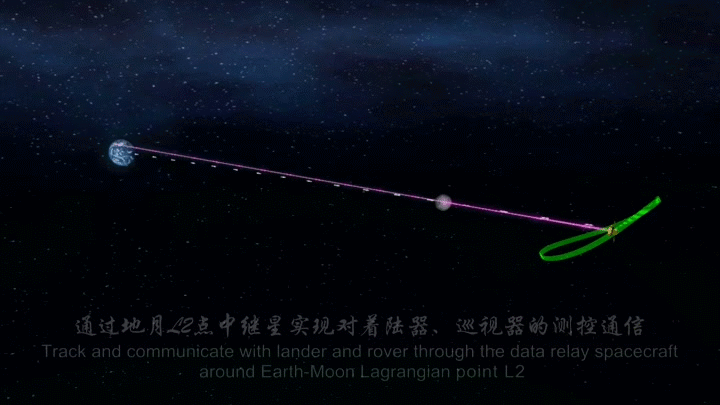


Another problem was the fact that the reverse side of the moon is more likely to fall into meteorites, so the terrain there is very complicated, which creates a high risk for an abnormal landing, which can lead to a tilting or complete loss of the landing module during the landing process.
To overcome this difficulty, through long studies, a relatively safe settlement site was chosen. Zhang and other engineers from the project team studied a large amount of relevant reference materials, consulted with a number of aerospace scientists, and analyzed the characteristics of the lunar soil and landscape to determine the approximate location for an optimal and safe landing of the station.
In the end, the chief designer of the landing apparatus, Li Fei, and his colleagues decided on the area for the landing pad in the Karman crater, within which there are sufficient flat areas on the surface for the project.

Map of the estimated landing site
Li Fei, who was born in the 1980s, was nicknamed the “walking encyclopedia” for a wide range of scientific knowledge.
In addition, according to Zhang He, already at the design stage, artificial intelligence technologies were introduced into the onboard computer systems of the landing gear, which allowed different project modules to become much smarter and more autonomous than previously launched ones.
An array of special sensors and cameras measuring various parameters of speeds and distances, which can also process real-time 3D images, was installed on the elements of the Chang'e-4 descent module so that the onboard systems could analyze and correct themselves during the landing procedure parameters and data on the situation, including information about the current position, angles and inclination to the surface, quickly identify unstable (dangerous) elements on the surface (stones, small craters) and be able to evade from such obstacles to the extreme point of no return in the process of landing in automatic mode without operator intervention on Earth.
Zhang He added that it is an advanced modern technology that meets high international standards.
Video landing procedure
Since the reverse side of the moon also has a more complex relief than the side visible from Earth, the design process had to take into account that the YuyuT-2 rover will face more serious problems and interference that may arise during movement than those with which His predecessor Rover "Yuytu", sent to the Moon surface in 2013, collided.
Wen Bo, chief designer of the Yuytu-2 rover, said that the design of the rover was significantly improved and improved, especially the emphasis was placed on preventing mechanical failure of systems during its operation.
Video of the descent of the rover "Yuytu-2"
After the Yuytu-2 rover was successfully unloaded from the Chang'e-4 descent module onto the lunar surface, Wen Bo is now responsible for organizing the remote control procedures for the rover.
Wen Bo said that since the lunar surface in the Chang'e-4 landing zone is full of folds, numerous pebbles and small craters, after each small movement, the rover should stop, take a picture of the surface around and send this data back to Earth satellite repeater.


Scientists on Earth then process this data and schedule a further route that the rover will follow.
Wen Bo clarified that the “Yuuta-2” rover antennas should be configured to point at the repeater satellite in order to send and receive control signals correctly, while the rover solar panels should be optimally tilted to get a large amount of solar light to maximize power generation at the time data is committed.

Facing all these problems during the preparation and implementation of the project, many of their solutions also promise to give us further opportunities and discoveries, Zhang He said, adding that the landscape elements on the back of the lunar surface may be older than similar on the visible side, so exploring the reverse side of the soil can shed more light on the origin and evolution of the moon.
In addition, the far side of the moon is an ideal place for low-frequency radio astronomical observations, since the moon blocks radio interference from the earth.
Zhang He explained that the Earth has the ionosphere, which makes it difficult to receive low-frequency radio signals from space. To receive and analyze the weak signals emitted by numerous distant celestial bodies, such radio astronomy experiments should be carried out in outer space, helping us to study the origin and evolution of stars, galaxies and the universe.
The data and results of similar experiments in near-earth orbits are also sensitive to electromagnetic interference from the Earth's surface, but there is no such interference from the Earth on the far side of the Moon.

In the photo: scientists at work, Xichang Satellite Launch Center - XSLC, Sichuan Province.
A dedicated team
“Usually, the design and development of a lunar project stage takes three to four years, and sometimes the capabilities and minds of tens of thousands of people — engineers, scientists and employees of various aerospace organizations around the world — are involved in such a project,” said Zhang He.
For the Chang'e-4 project, at the first stage, the main models and elements for its modules were designed, then these models were refined, manufactured at various industry and industrial productions, assembled by components and nodes, passed stage-by-stage testing.
The Chang'e-4 descent module consists of more than 200 different elements, the Yuuta-2 rover consists of almost 100 complex elements that have been repeatedly checked and corrected / modified during the assembly process again and again.
According to Zhang He, since the aerospace industry is of great importance for the development of national wealth and human capabilities in general, real aerospace engineers are usually passionate about their work and completely committed to it.
“The most characteristic feature of any spacecraft is that after launching it is practically not recoverable in the event of a failure of any systems, unlike a car that can be withdrawn if it shows a malfunction, or an aircraft that can be serviced periodically, leading in order of his system, "explained Zhang He.
Any (even very minor) negligence can negate our years of hard work, so engineers in the aerospace industry attach great importance to the quality of their work and the numerous testing of their developments.
“We must determine in advance all potential risks and try to do everything possible to control them during the implementation of the project’s stages,” said Zhang He.
“The space industry is highly risky and requires long-term investments, so all employees in their work are almost always under great pressure, including from the burden of responsibility,” said Li Fei.
On the wall in the aerospace control center, opposite the giant video screens, there are several large boards with simple and clear inscriptions “Without defects, without failures ... high standards” , reminding employees of the need for thoroughness and absolute accuracy in their work.
In addition to the compulsory forethought and attention to detail, Zhang He's colleagues often had to arrange races over time in order to meet deadlines and not disrupt the execution dates of project stages.
It is no secret that the developers of the Chang'e-4 lunar project often worked overtime, and at the most difficult moments during the project, they even moved to a hotel next door to the Chinese Academy of Space Technology to save time on the way to the workplace.
Moreover, not all work on the project was carried out in comfortable offices with air conditioning. Some field tests of the modules were conducted at the Academy grounds in northeastern China, where the winter is very cold, and some in the north-west of the country in the harsh areas of the Gobi Desert. However, colleagues Zhang He do not complain about difficult working conditions in their lives.
Work / life balance
More than two decades have passed since Zhang He began working at the Chinese Academy of Space Technology after graduating from Beihang University, formerly known as Beijing University of Aeronautics and Astronautics, the first higher education institution in the field of aeronautics and astronautics, established after the founding of the People's Republic of China in 1949 .
during this period, Zhang He has grown from a young new employee of the Academy engaged in dynamic analysis to the executive director of the second lunar project in China.
She is also a mom who has a teenage son. As a permanently working mother, she does not believe that her work and family responsibilities are incompatible.
“A working mother is a role model for her child,” said Zhang He, adding that her son also loves science.
Admittedly, some of his colleagues Zhang He still missed some important moments in the lives of their children in the process of performing their complex and demanding permanent presence at the academy or cosmodrome work assignments.
When Cheng Ming, an aerospace engineer from the project team Zhang He, went to Xichang’s Chinese space center to complete the final preparations for launching the Chang'e-4 project in December last year, his son had an operation at the same time.
Just five years ago, Cheng Ming missed the birth of his son, because he was busy preparing for the launch of Chang'e-3.
However, Cheng Ming was able to soften the feeling of guilt in front of his son at the moment when he was able to proudly explain to his son that his father had helped send the research apparatus to the moon.
For Cheng Ming, such a sense of pride is his motivation for pursuing an engineer’s career and participating in new space research.


